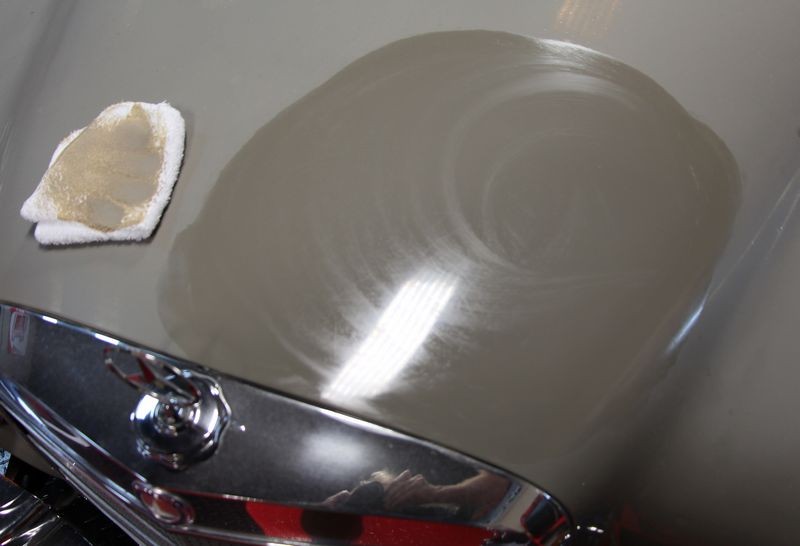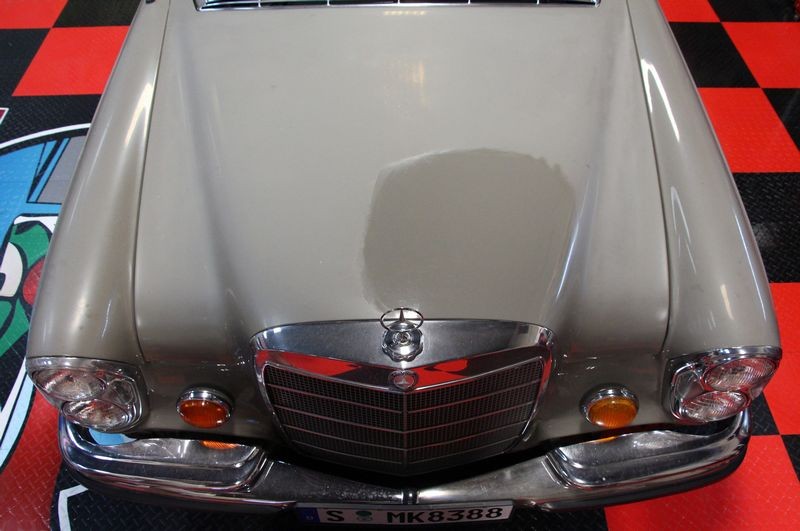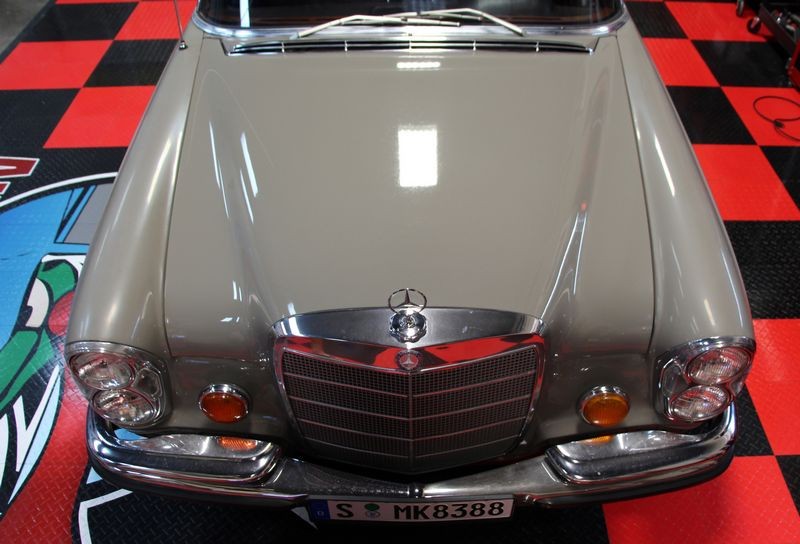Help with restoring the original single stage paint on a 1973 Plymouth Road Runner Survivor Car
I love getting these types of e-mails from people. I know what it's like to be in their shoes... that is, to be privileged to own a cool survivor car with the original single stage paint. And at the same time, looking for accurate information to safely and correctly restore the paint without causing irreparable harm.
From Curt in Alabama
Hi Mike. I hope you are doing well. Love the show and I think that you are AWESOME!
I have the privilege of owning a 1973 Plymouth Road Runner Survivor. It retains approximately 75% of its original paint which I verified with a quality paint thickness meter. The car has splotches /clumps of what appears to be the silver metallic in the paint.
I had a 73 Plymouth Satellite survivor, metallic blue, with same spots. I sold the blue Plymouth. The new owner had it wet sanded and buffed and the splotches came out.
What are your thoughts on this and what is going on with these cars?
Both are factory metallic colors. If you enlarge the attached photos, you can kind of see the spots. I am too nervous about having the Road Runner wet sanded and buffed.
Can I pay for your services? Maybe addressing this issue on your show or YouTube is a possibility.
Thank you for your service to our hobby! :-)
Sincerely,
Curt
Hi Curt,
I prefer to help others with their car projects via the forum as it's much easier for me to share links to other topical articles, videos and pictures.
First - here's the pictures of your incredibly cool 1973 Plymouth Road Runner!
And here's your 1973 Plymouth Satellite... looks like the front fender is a different color than the door and back fender?
SEcond - I would NOT wetsand an original single stage metallic finish. Two reasons why,
1: First it's antique, it's original and there's value to having intact original paint on a survivor muscle car.
2: When you sand on single stage metallic paint you're sanding directly ON the flakes and this will alter the appearance in a negative manner and you will not be able to undo the damage.
More than likely you can fix or restore the gloss and clarity and create a uniform appearance to the paint by simply using a product like Meguiar's #7 Show Car Glaze and a little elbow grease.
Here's what I would do if this car was in our garage.
Step 1: Get the car clean. As a "Best Practice" and a professional courtesy to the owner of classic cars and muscle cars I don't wash them, that is I don't introduce running water to places I cannot dry because it creates a rust issue. One of the largest expenses to any car restoration is to remove rusted sheet metal panels and replace them with new sheet metal. So I tend to use waterless washes.
Step 2: If the single stage paint is shiny then I would inspect for above surface contamination and if discovered use some detailing clay to remove the contamination. Use the Baggie Test like AJ shows here,
The Baggie Test as seen on Competition Ready TV with AJ and Mike Phillips
If the paint has visible white or chalky oxidation then skip claying as all you'll do is load your clay up with dead paint.
Step 3: Hand apply or machine apply using a simple orbital polisher the Meguiar's #7 Show Car Glaze. For dull areas, use the product heavy or wet. This means use a lot of product. Massage the product over the paint using either a clean, soft 100% cotton terry cloth wash cloth or a microfiber towel like the Griot's PFM Wax Removal Towels. These are microfiber so they are gentle but they have a large nap or "loop of string" which makes them more aggressive and stout and this makes them better than soft, limp microfiber when working with #7 for this type of polishing work.
Griots Garage PFM Wax Removal Towel, Set of 4
If working with a simple orbital polisher, for example a Porter Cable dual action polisher or a Griot's Garage 6" orbital polisher or a Meguiar's G100 or MT300 - with these types of simple polishers you can use a soft foam "polishing" pad. Not a cutting pad or a finishing pad but right in the middle - a polishing pad.
With either approach, massage the product over the dull spots for 6-8 passes and then wipe off and inspect. You should be able to do something that looks like this,
4 Steps to restore single paint - 1972 Mercedes-Benz 280 SE
Before
With a Porter Cable polisher
After
It's about taking your time. Working carefully. Letting the oils in the #7 do their job and taking the less aggressive approach either working by hand or with a simple polisher.
After massaging the dull spots on the original paint with the #7 inspect closely. You may want to and need to use an abrasive polish to getter more gloss and shine but test first and when selecting a polish stick with known good brand names as the most important factor when it comes to polishing paint is the abrasive technology.
Hope that helps.... feel free to call me to discuss...
1-800-869-3011 x206


|











 Thanks:
Thanks:  Likes:
Likes:  Dislikes:
Dislikes: 









 Reply With Quote
Reply With Quote
Bookmarks